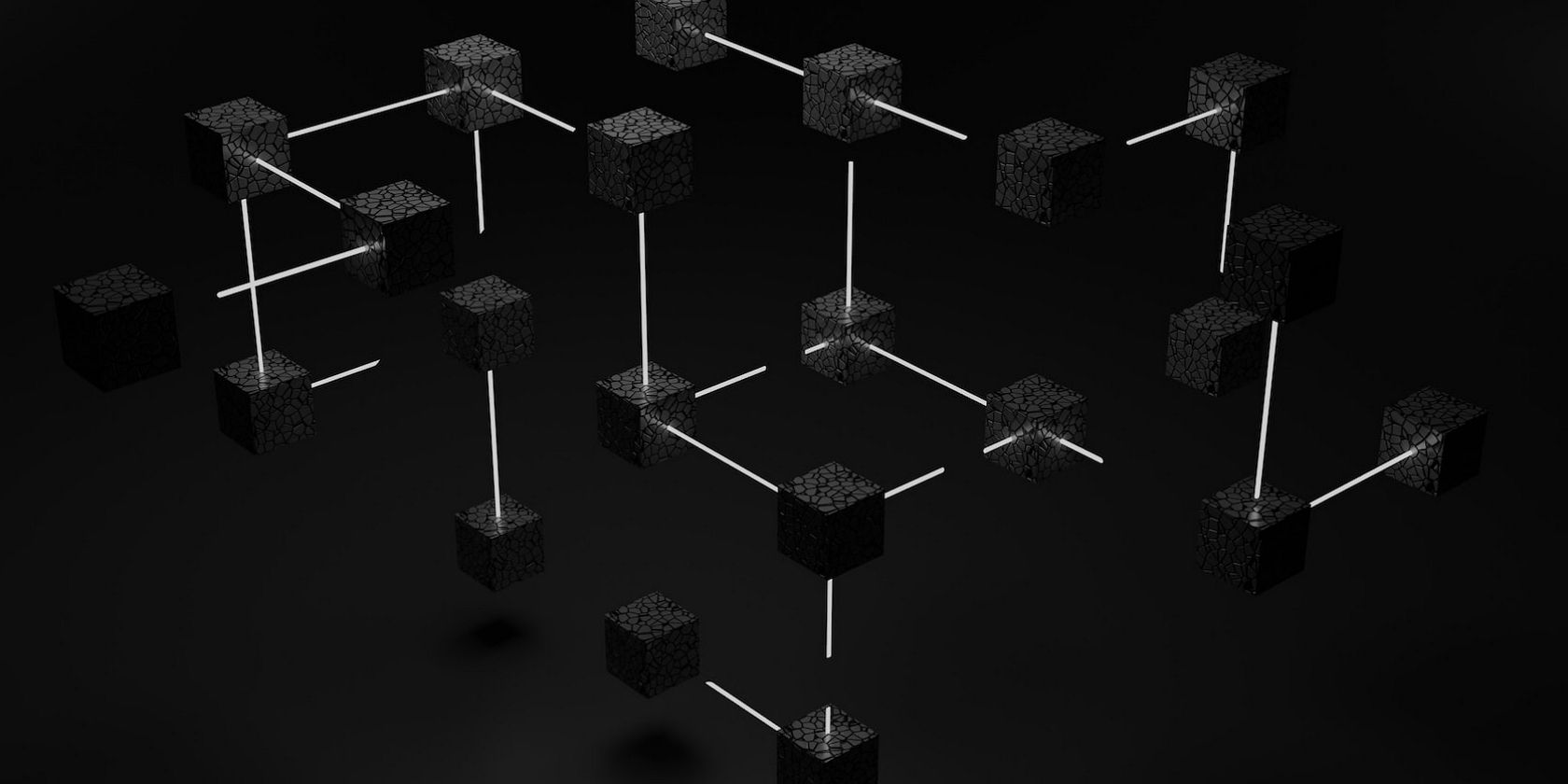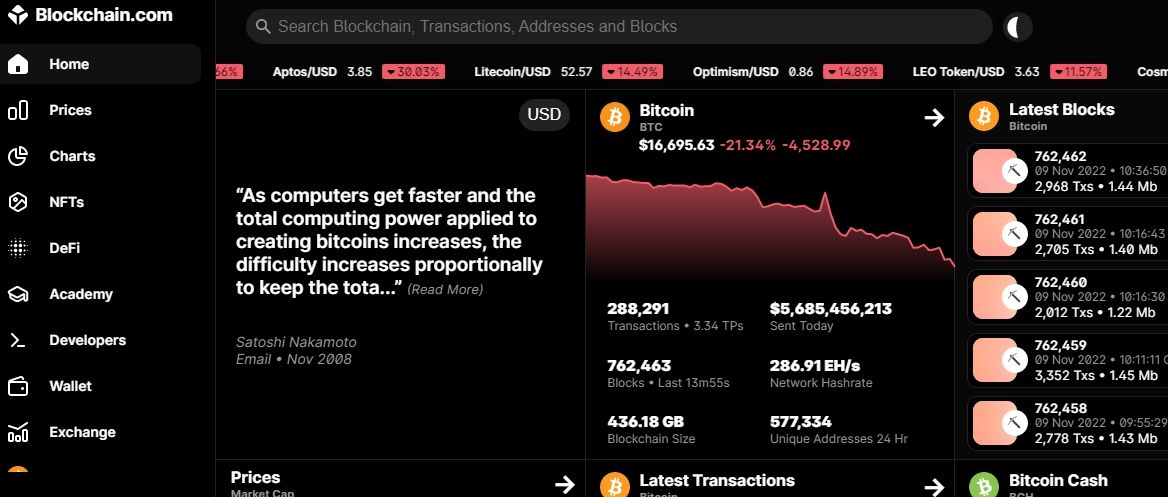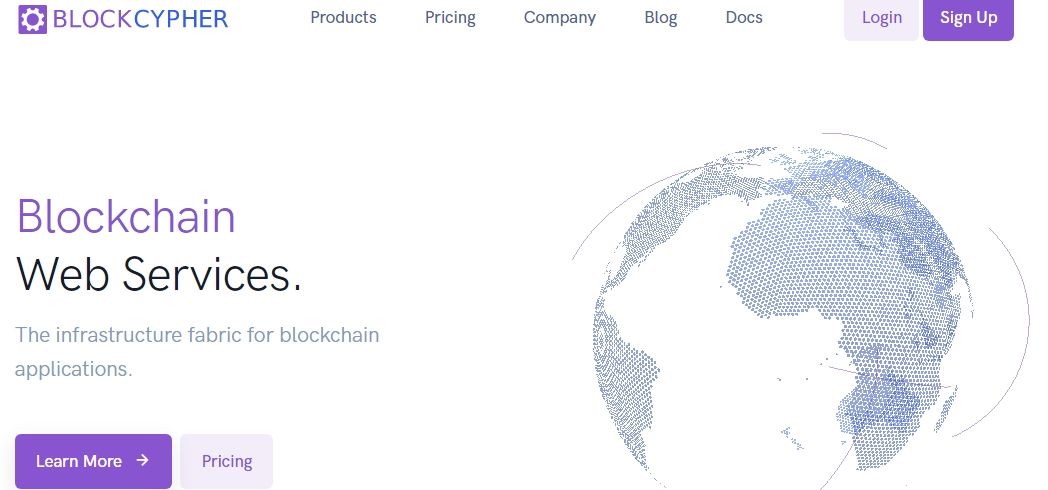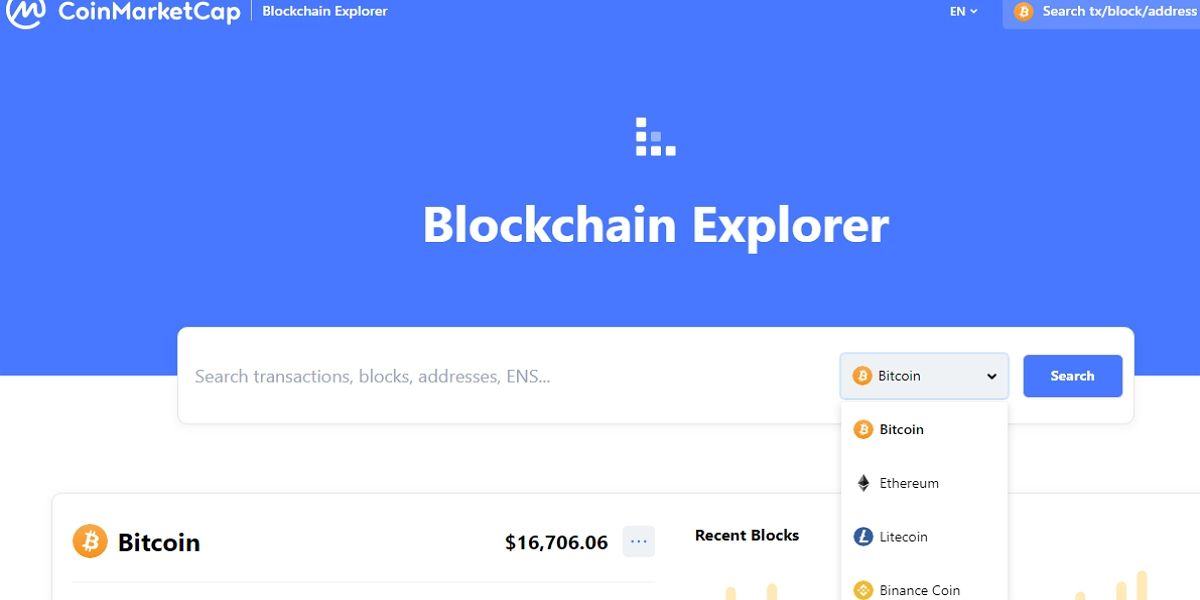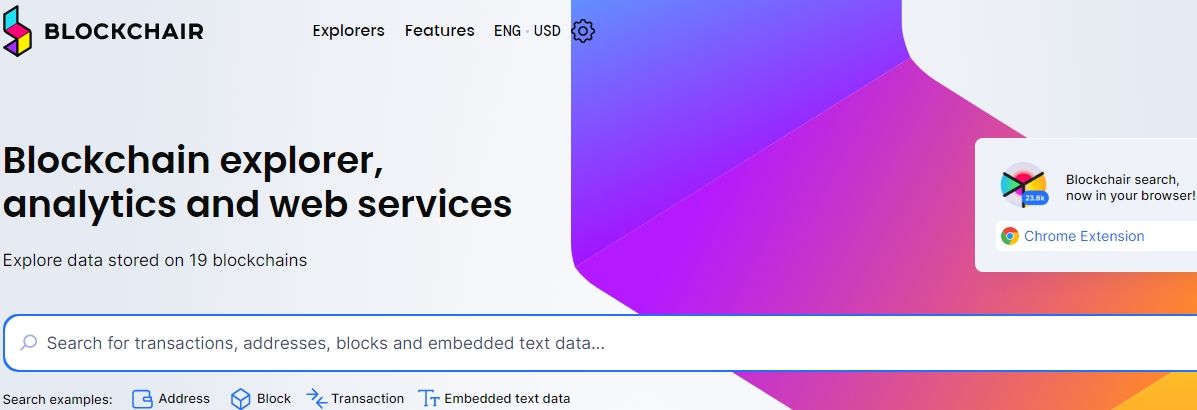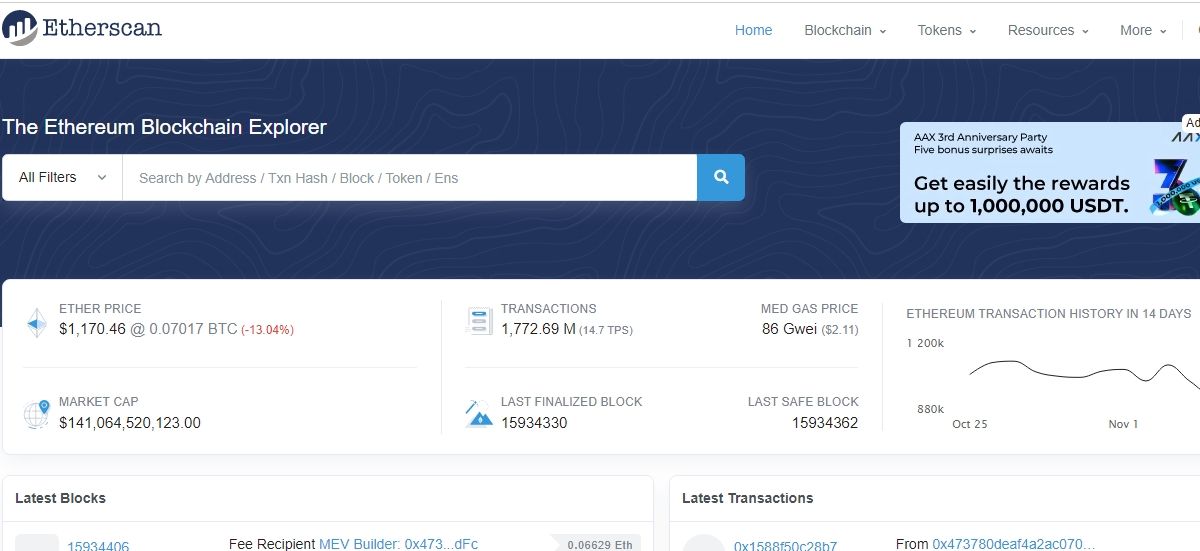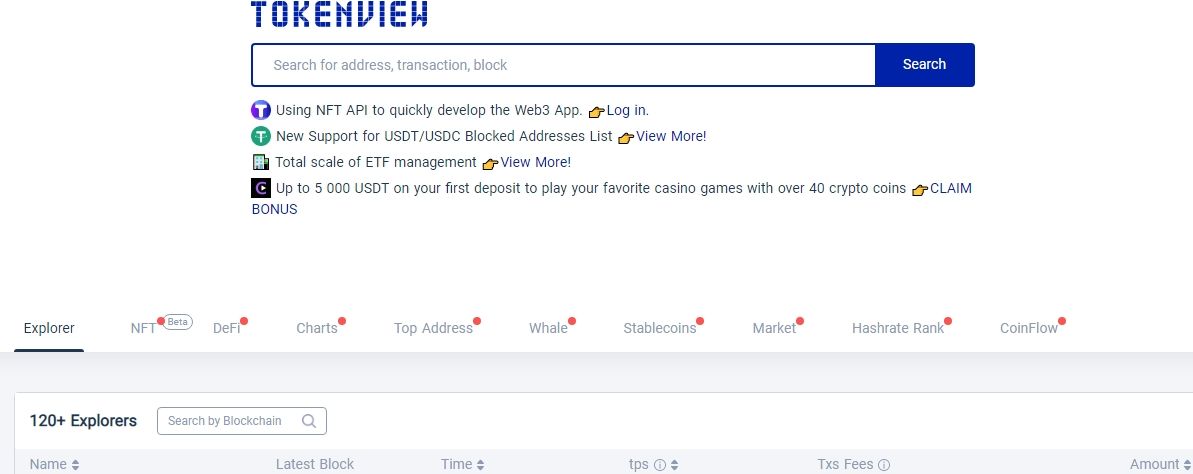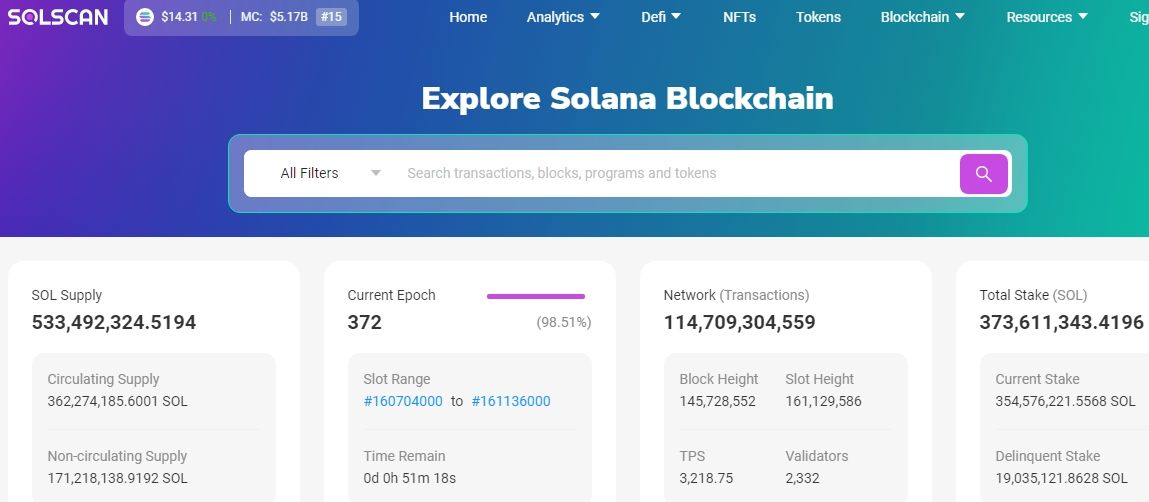Blockchain explorers are one of the most important tools you need to have in your arsenal when dealing with crypto and some other blockchain systems. This tool will get you the information you ordinarily wouldn't get on the surface. This info is useful for both new users and experts to help manage their crypto activities.
Now let's look at what blockchain explorers are, how they are used, and some popular explorers used for certain blockchains.
What Is a Block Explorer?
A blockchain explorer, or block explorer, is software used to view information on a blockchain. You can call it the Google of blockchain because it works much like a search engine. It gives insight into different aspects of how a specific blockchain functions—from the consensus mechanism to transaction information.
The data on block explorers are usually organized and in easy-to-read formats, allowing you easy access to relevant information.
Reasons You Should Use Block Explorers
Blockchain explorers are advantageous to individuals, businesses, and experts dealing with crypto. Some of the information you can get through it include:
- A transaction's status
- A wallet's transaction history
- All the receiving addresses of a wallet's transactions
- The value of assets held in a wallet
- Technical information about an address, like the hash rates, gas fees, transaction volumes, and block difficulties
- Who mined a specific block
- Stale blocks that are not yet attached to their parent blocks
- Many other block activities, like if a block creation process has been successful, for them to get block rewards and much more technical information
It is more like getting a bank statement for your crypto wallet address. It is also a tool that helps you ensure transparency and gives you better control over transactions.
How to Use Block Explorers
Most block explorers are similar to each other—their primary differences are the blockchains they support and each supported blockchain's unique features.
Most explorers also have a search field on their home pages where you can paste wallet addresses, block numbers, and transaction hashes to get the required data quickly.
To get information about a particular transaction, copy the transaction ID into the search field and hit enter. The results would give you specific information about the transaction, like if it was successful, still in progress, or failed.
These are the common transaction statuses shown in a blockchain explorer
- Pending: The network is still processing the transaction.
- Confirmed: The transaction goes through different confirmation stages, and "confirmed" tells you that your transaction has been completely processed.
- Complete: At this point, the transaction is irreversible because the process is already complete.
- Failed: This shows that the transaction encountered some problems and cannot be continued.
By pasting a wallet address, transaction hash, block address, and any other required information, you can see details of the network hash rate, a blockchain address's activities, transaction growth, and many other useful statistics.
You should see each block explorer as a search engine that gives insights into the different parts of a blockchain's functions, aiding you in navigating the blockchain's ecosystem.
7 Popular Crypto Blockchain Explorers
These are the most popular blockchain explorers you can currently use:
1. Blockchain.com
Blockchain.com is a popular block explorer for Bitcoin. Besides letting you check for blocks, addresses, and transactions, you will also see charts related to the Bitcoin blockchain, like the hash rate, hash rate distribution, and block size.
The explorer also gives you access to explore information on many other cryptocurrencies, including Ethereum, Binance Coin, Cardano, and Polkadot.
2. BlockCypher
BlockCypher is an open-source explorer with various tools that let you check for needed information. Its UI is well-designed and user-friendly, so even beginners will easily understand what's going on.
BlockCypher works for Bitcoin, Ethereum, Grin, Dogecoin, Litecoin, Dash, and the Blockcypher Testnet. You can search for information on the platform using your address, transaction hash, block hash, block name, and wallet name.
3. CoinMarketCap
You can use the CoinMarketCap blockchain explorer to check for information on the Bitcoin, Ethereum, Litecoin, and Binance Coin blockchains. CoinMarketCap gets the data directly from the featured blockchain and presents it in a simple form for you to get a lot of information at a glance.
The option to choose the blockchain of your choice is right beside the search field, and after choosing it, you can paste whatever you want to search in it and then search.
4. Blockchair
With Blockchair, you can explore data stored in 19 blockchains, including Bitcoin, Ethereum, Litecoin, Cardano, Ripple, Polkadot, Solana, Monero, and Bitcoin Cash. Besides being able to search through transactions, addresses, and blocks, Blockchair also allows you to search for information using embedded texts related to a blockchain.
5. Etherscan
There are some other block explorers for Ethereum, but Etherscan is the most popular of them. Ethereum traders and investors use the platform for on-chain analysis; they use it to track whale movements, track stolen funds, check for Ethereum gas prices, and read Ethereum transactions' private notes, among other things.
The Etherscan team worked on additional features to improve the Ethereum network. They launched a project called Beaconscan, an Ethereum 2.0 explorer you can use to track the ETH 2.0 staking process.
6. Tokenview
Tokenview provides over 120 blockchain hash searches and smart contract details and covers all chain data in the current blockchain field. It integrates block explorers for BTC, ETH, TRON, LTC, LOST, USDT, BCH, DOGE, and many more.
You can access the blockchain explorer in English, French, Chinese, Spanish, and other languages. So, even if English isn't your first language, you can easily understand the information you need.
7. Solscan
Solscan is a block explorer and analytics platform dedicated to the Solana blockchain. The platform was founded in 2021 and serves more than 2.3 million monthly users. It grew in popularity and use after its introduction, and it is now seen as an alternative to Solana Explorer, another popular block explorer for the Solana network.
You should check out our guide on using Solscan to track the Solana market if you want to learn more about it.
Aside from these seven block explorers, there are other options like BSC Scan for Binance SmartChain, Tronscan for Tron, Polygonscan for Polygon, Atomscan for Atom, and many more.
Useful for All Crypto Users
Blockchain explorers offer flexible and simple solutions for checking a blockchain without programming or technical expertise. It is an essential tool for current and aspiring crypto and blockchain users.
You don't have to stay in the dark about transaction progress, fees, or other information you are not ordinarily open to. Block explorers greatly support individuals and experts in decision-making about blockchain activity and solutions.

